Abstract
Photosynthetic responses of intact leaves of the desert shrub Encelia farinosa were measured during a long term drought cycle in order to understand the responses of stomatal and nonstomatal components to water stress. Photosynthetic rate at high irradiance and leaf conductance to water vapor both decreased linearly with declining leaf water potential. The intercellular CO2 concentration (ci) remained fairly constant as a function of leaf water potential in plants subjected to a slow drought cycle of 25 days, but decreased in plants exposed to a 12-day drought cycle. With increasing water stress, the slope of the dependence of photosynthesis on ci (carboxylation efficiency) decreased, the maximum photosynthetic rates at high ci became saturated at lower values, and water use efficiency increased. Both the carboxylation efficiency and photosynthetic rates were positively correlated with leaf nitrogen content. Associated with lower leaf conductances, the calculated stomatal limitation to photosynthesis increased with water stress. However, because of simultaneous changes in the dependence of photosynthesis on ci with water stress, increased leaf conductance alone in water-stressed leaves would not result in an increase in photosynthetic rates to prestressed levels. Both active osmotic adjustment and changes in specific leaf mass occurred during the drought cycle. In response to increased water stress, leaf specific mass increased. However, the increases in specific leaf mass were associated with the production of a reflective pubescence and there were no changes in specific mass of the photosynthetic tissues. The significance of these responses for carbon gain and water loss under arid conditions are discussed.
Full text
PDF
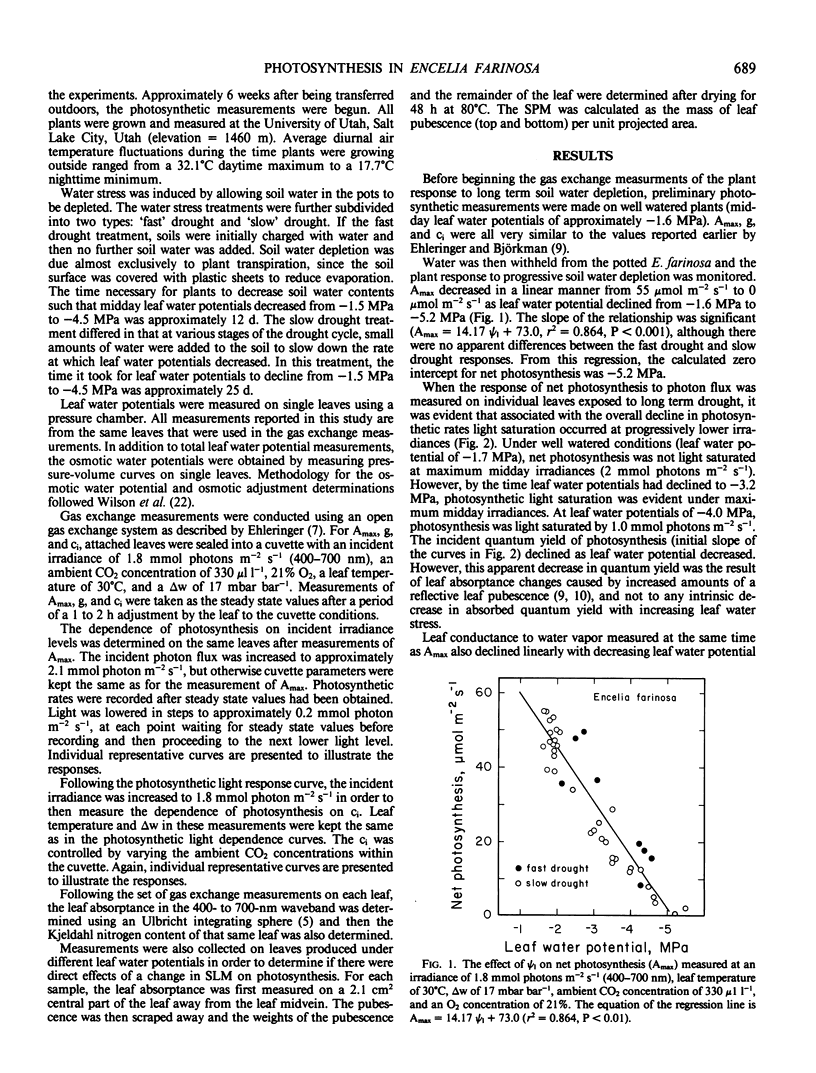
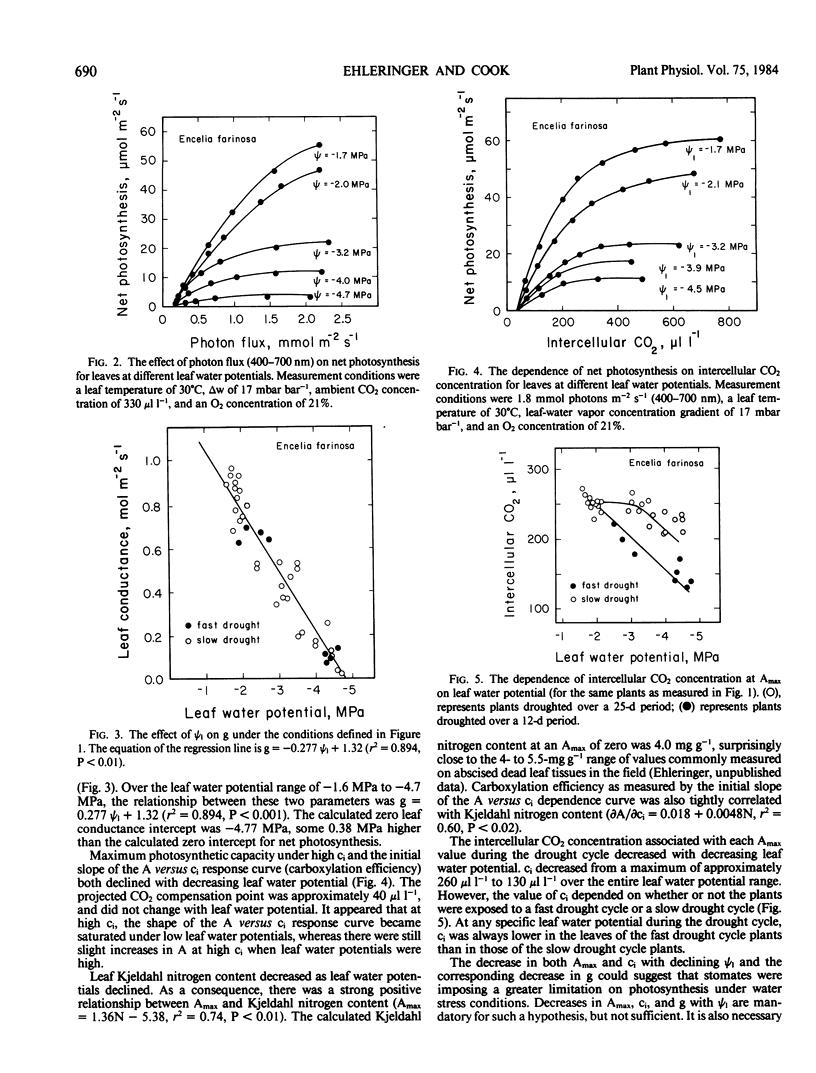
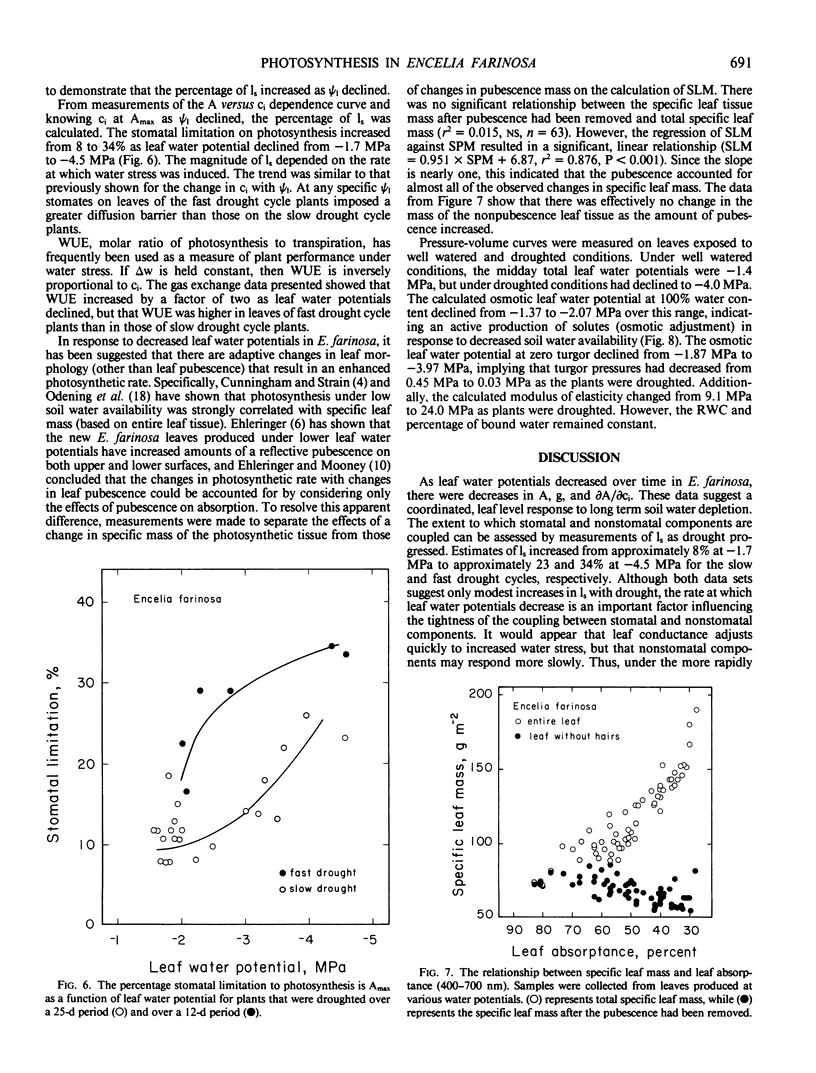
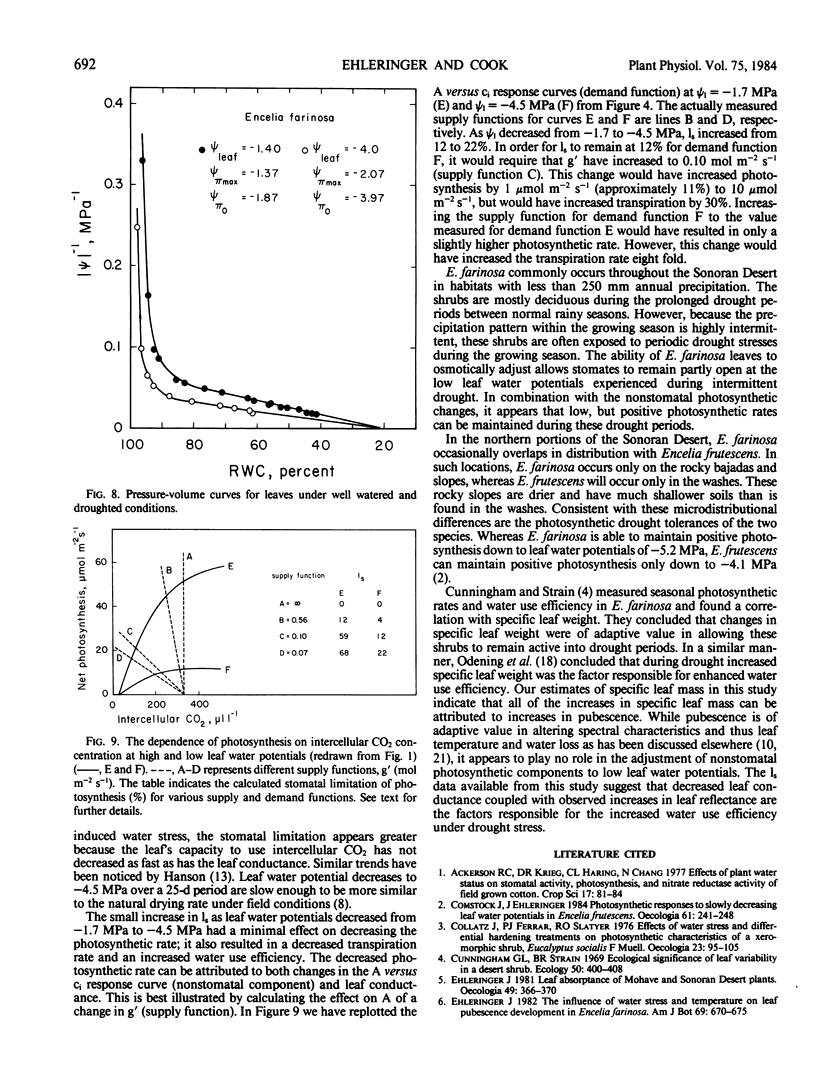
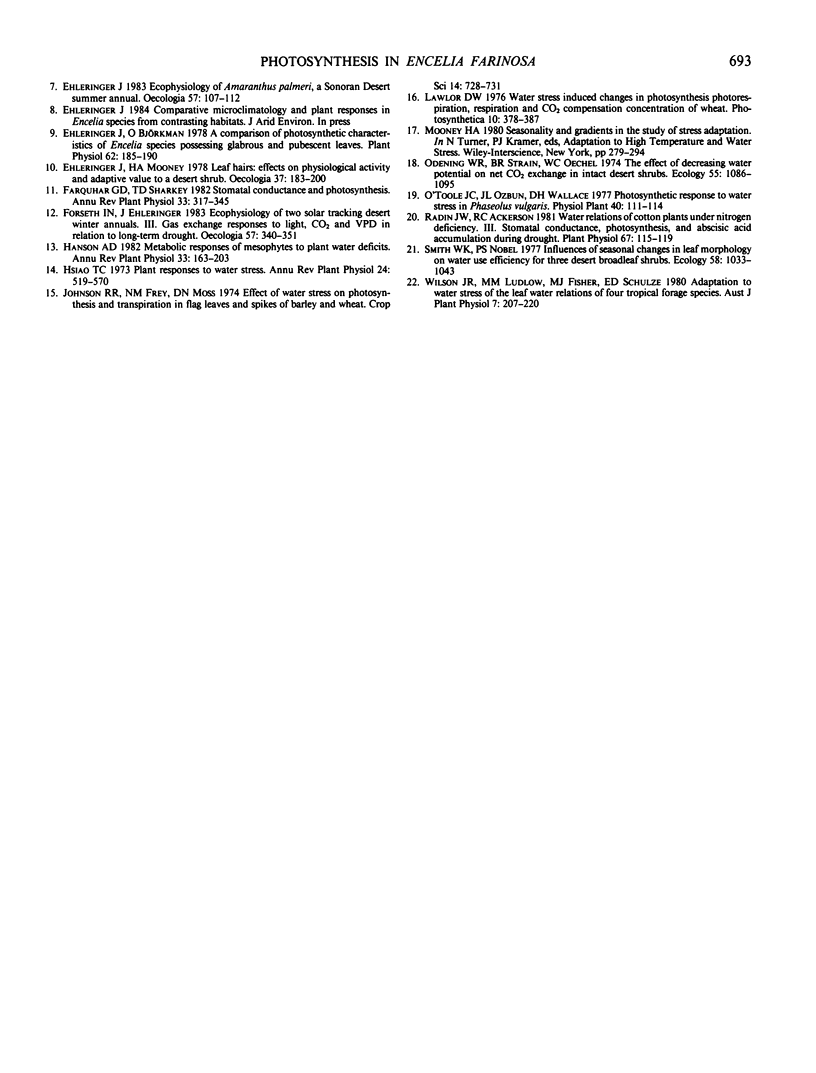
Selected References
These references are in PubMed. This may not be the complete list of references from this article.
- Ehleringer J. R., Björkman O. A comparison of photosynthetic characteristics of encelia species possessing glabrous and pubescent leaves. Plant Physiol. 1978 Aug;62(2):185–190. doi: 10.1104/pp.62.2.185. [DOI] [PMC free article] [PubMed] [Google Scholar]
- Evans J. J., Evans P. J. OCULAR CHANGES ASSOCIATED WITH NAEVUS FLAMMEUS. Br J Ophthalmol. 1939 Feb;23(2):95–105. doi: 10.1136/bjo.23.2.95. [DOI] [PMC free article] [PubMed] [Google Scholar]
- Radin J. W. Water Relations of Cotton Plants under Nitrogen Deficiency: III. STOMATAL CONDUCTANCE, PHOTOSYNTHESIS, AND ABSCISIC ACID ACCUMULATION DURING DROUGHT. Plant Physiol. 1981 Jan;67(1):115–119. doi: 10.1104/pp.67.1.115. [DOI] [PMC free article] [PubMed] [Google Scholar]


